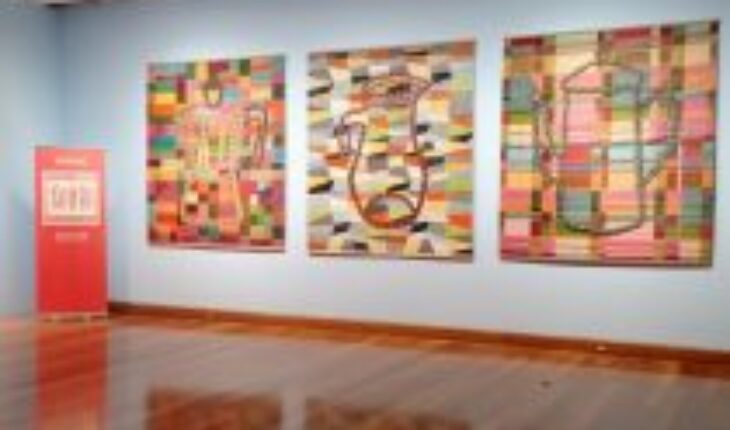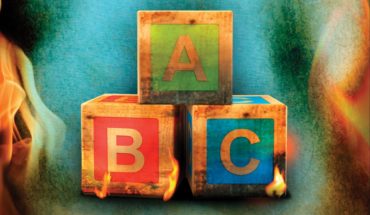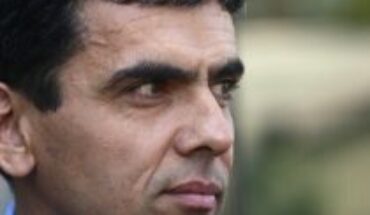Opening ourselves to the possibility that leisure ceases to be seen as something harmful, is what Bruna Truffa (1963, Arica) proposes by making it tangible through a creative process that brings with it a series of conceptual breaks where the boundaries between globalization and the domestic vanish. A fact that is evident in the exhibition “Leisure stamps”, located in two rooms, of the MAVI UC until March 2023.
Starting with the fictional scenario that he has set up around China (room 1), and especially in a Wuhan between imaginary and supposed or if you want immediate. Thus establishing a field of action in which we retrogress the effects of the pandemic, which above the circumstances of the confinement, operates as a cause-effect to coin these stamps, which above their oriental roots (both Chinese and Japanese), emphasize the recognition of copying and anonymity, as part of a culture strangely opposed to our way of seeing art, Where the game of tradition (the permanent) versus the transitory (the copy) and vice versa, are typical of an action where nothing is what it seems, or vice versa, since the consistency of reality is so forceful, that so that it does not crush you must invent another parallel that allows you to experience playfully and collectively.
As the artist herself explains, “this exhibition operates as a laboratory, I always work with equipment, which for me is key. It implies letting go of the hands, delivering the work to the process so that the subject of the same authorship is questioned. ”
In this sense, the paradox can be understood as an unprecedented act of pertinence capable of replacing authorship with anonymity, leaving creative doing in many hands. An attribution that is also evident in works where the incidence of the collective challenges the Western model, stripping it of its individuality, in favor of an artistic exercise that questions paradigms, tracing a different route.
In addition, we must not forget that we are witnessing a divergent reality, with forced hygiene rituals, where categorically dispensing with our brief freedoms, trivializations and domesticities was added to a routine in which medicines also began to proliferate, which here acquire a manifest role, which leaving aside sarcasm, refers to a substantive and hopeful desire for healing. A course in which to confront and affront are mixed, and where the fatalistic dye converges with the allegorical, plus an underground and ironic vision of this globalized and oversaturated society. The one that is also expressed in room 2 with the series of Natura Morta / Still Life, inspired by the work of the women of the Bauhaus and the painter Giorgio Morandi. In order to represent the pictorial tradition in the West as an ideological and self-conscious decision, exposed both through the classical techniques of oil and embroidery, but again making a crossroads between geometric abstraction and the weight of a technique that when established evidenced the oppression of women in an artistic medium dominated by men and in which irony focuses on showing serenity, Well-being and harmony from the chromatic to the aesthetic, but with an iconography and craftsmanship also thought of connecting from emotionality, since it appeals to blur the boundaries between the elitist and that someone who is not part of this intellectual sphere, sees this sample and feels equally represented.
Alluding to the daily drama may be commonplace, but the various ways of approaching it that Truffa proposes, unusual or that are not perceived as such, is to give another approach to what is a common reference (the cup, the kettle, the coffee maker), but that under the trap of the pandemic were transformed into a diversity of layers and crosses similar to the Andean braid that refer it to its Ariqueño origins even. What reveals a letting go by chance, generating aesthetics ranging from the simplest to the abstract and from the most pedestrian to the most symbolic.
In “Stamps of leisure”, we see all that and more, given that Bruna Truffa not only uses the pandemic as an alibi, by taking advantage of the closest environment, but also recreates the domestic. An axis through which we perceive that veiled, but sharp hint of irony that is so familiar to them and that always accompanies it, questioned and placed, but that in this case is extended to the aforementioned boxes of remedies that are transformed -almost inadvertently into modernist paintings- to certain disjunctions thatAnd they entail other disjunctions or even adaptations between Eastern and Western popular culture, including the recycling and resignification of images or the roles associated with the history of art, the artistic work itself, or the genres and all the controversy that this background brings, which here is expressed with a permanent and renewed counterpoint.
Follow us on
The content expressed in this opinion column is the sole responsibility of its author, and does not necessarily reflect the editorial line or position of El Mostrador.





